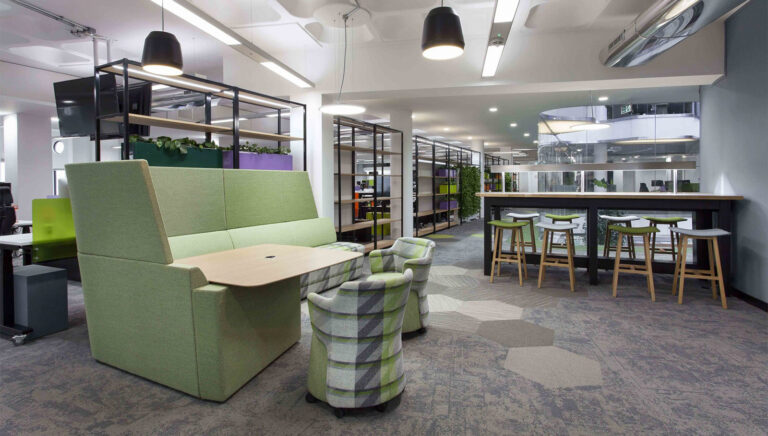
The Demise of the Desk & What Employees REALLY Want from the Office.
Date
22 December 2021
Read length
6 min
Returning to the office, whatever that looks like, is a bit of a muddle. Guidance is confusing, opinions are conflicting, organisations are trying to define a renewed purpose for their office spaces and to deal with Covid safely. This protracted period has caused stress and anxiety levels and the latest advice from the Prime Minister certainly hasn’t helped. Consequently, the role of the office and office interior design has been put squarely in the spotlight.
Over the last year it’s become apparent that most office users know which activities are better suited to home or remote working and which are best performed in the office environment. Widespread industry research, as well as our own, reveals an overwhelming desire from employees to adopt a hybrid, part-home, part-office working solution, with 2-3 days in the office and the rest at home. How this impacts an organisation’s ability to thrive depends largely on the employer’s aptitude to change and how it implements that change.
It’s one of the reasons that our annual consultation of workers is so important this year. In the first half of 2021 we consulted 6,000 individual workers from organisations in sectors as diverse as law, housing, professional services, property, higher education and leisure, to better understand what they want and need from their workspaces.
Notwithstanding the diversity of our research base, we spotted numerous commonalities. The decline in emphasis on the office desk is one of them. Our research revealed that all of the surveyed organisations could reduce their desk-count by 23% straight away, and that all could decrease by 40% if they spread people’s use of the office across the week.
Interestingly, we also asked our 6,000 workers to rate their existing office facilities for collaboration and socialisation. Most scored poorly, yet the provision for desking and process-led work scored highly. These insights give a clear indication of the future purpose of the office from the employee’s perspective and therefore, how we must respond in office interior design terms. It highlights what we’ve all known for a while – that the desk is no longer the core component of the office and that by reducing its dominance, it becomes possible to create the new destination office spaces that will make hybrid workers visit.
Some other key findings from our research show that:
- Employees feel focused, private and concentration-led tasks are better performed at home, while the office is more suited to collaboration, social activities and training tasks
- Fresh air, space, opening windows, views outside/natural light, personal control of their environment, tidiness and cleanliness and access to outside space are among the key requirements of employees when they come into the office.
- Employees want to the use the workplace for collaboration with colleagues, to feel connected to the organisation’s brand and its values, for creativity and innovation, to socialise with colleagues, for training and mentoring and to promote the brand.
Post-pandemic, the workplace experience is increasingly determined by good environmental factors. In previous years’ research we may have been told an ergonomic task chair was a top priority. Today, it is fresh air, cleanliness, and personal control topping the list.
Not surprisingly, being able to control our workplaces at home has fed into the concerns of many office users. Employers must demonstrate exemplar standards in environmental conditions to ensure people feel confident to return to the office, particularly in relation to hygiene and social distancing. But it’s not just about responding to Covid – it’s about making workspaces offer the same comforts, choice and control that workers’ homes afford. Real-time monitoring of air, light and noise quality and the individual control of elements such as task lamps, will help to mitigate concerns and rebuild trust in the workplace. As will offering a variety of activity-based work settings, ample spaces to socialise, relax and collaborate and the experiences that home-working just can’t provide.
As organisations reimagine their workplaces to better support new working models and approach office interior design and office refurbishment projects with renewed vigour, robust evidence-based data is tremendously important. Workplace consultancy data ensures employee-orientated thinking, identifies actual rather than perceived needs and provides a blueprint to a destination office that meets the needs of today’s and tomorrow’s hybrid workforce.
For your copy of Claremont’s latest research – Download The Legacy Report here.
See how we could help with your new office interior design or office design and build project here
Get in touch
We love nothing better than talking all things workplace and design – got a question, potential project or just need some guidance?
Drop us a note…




